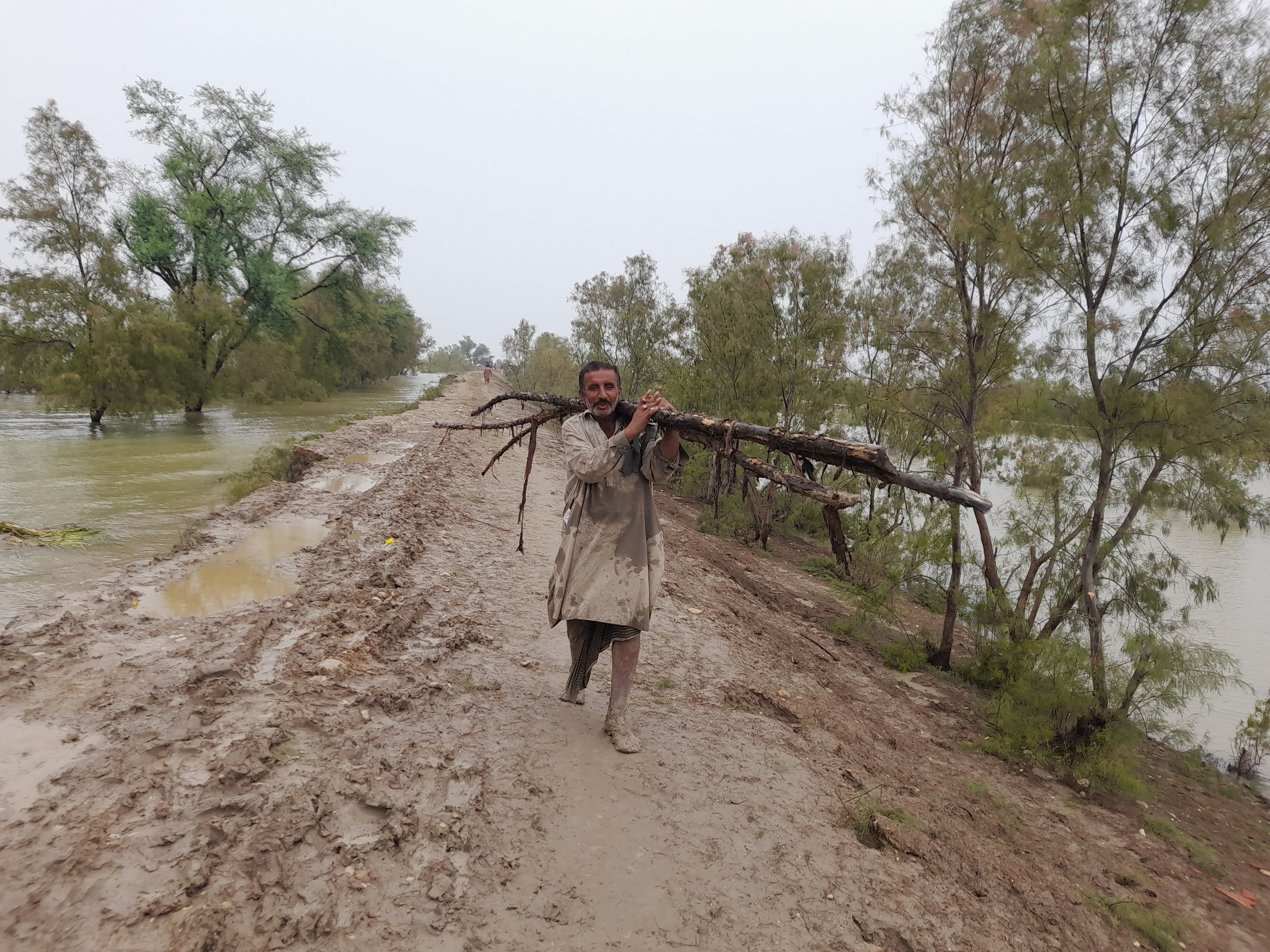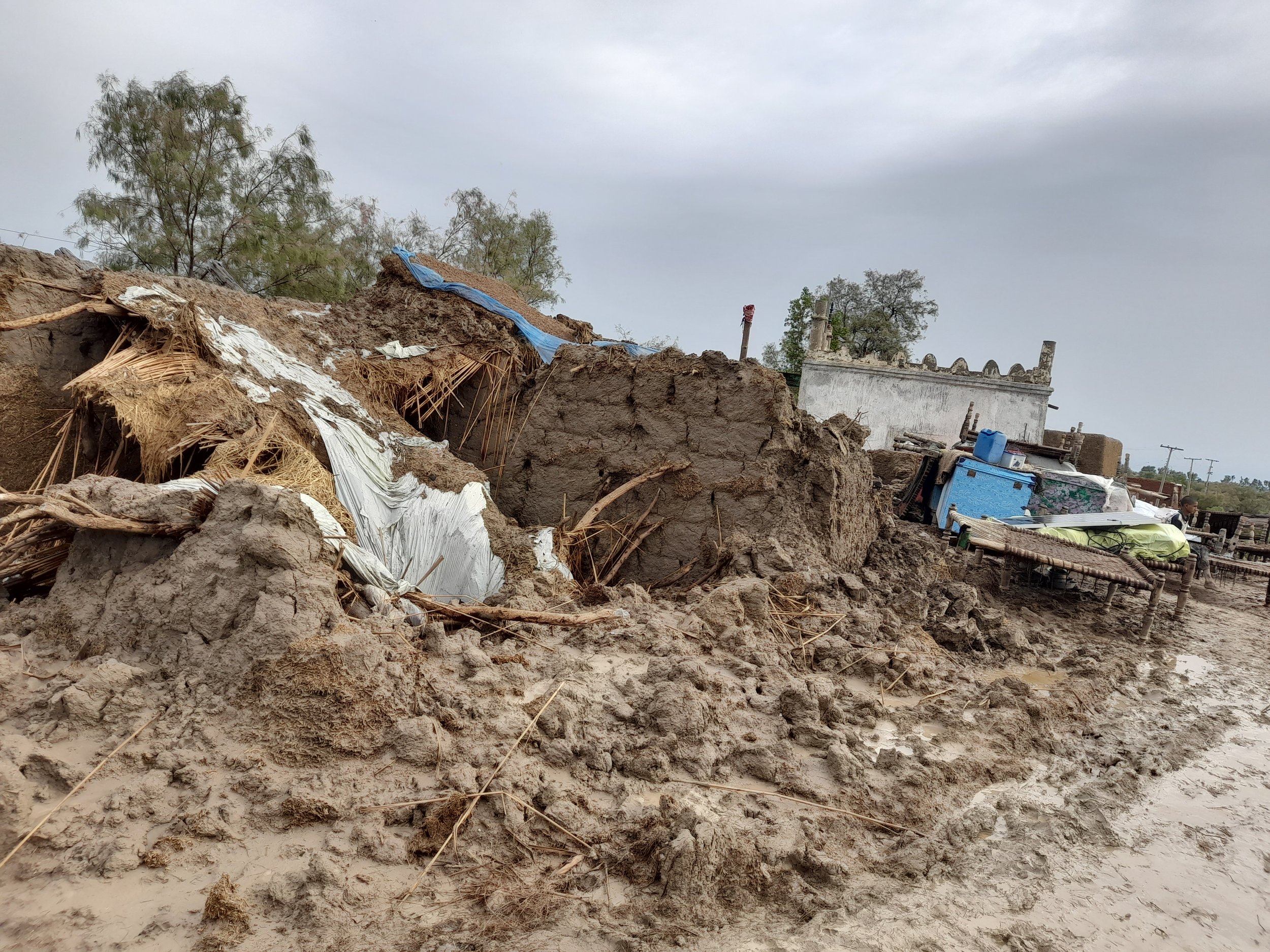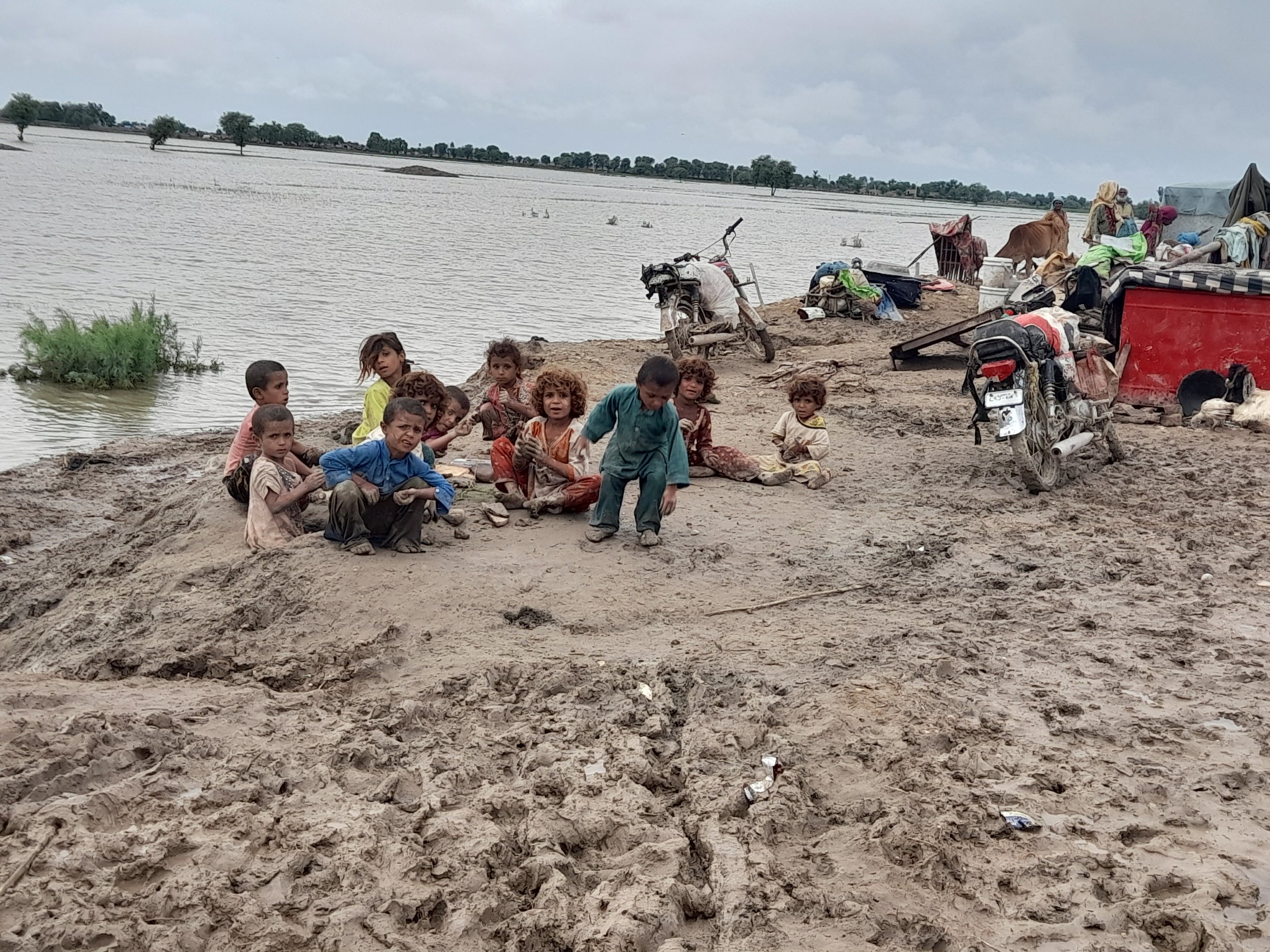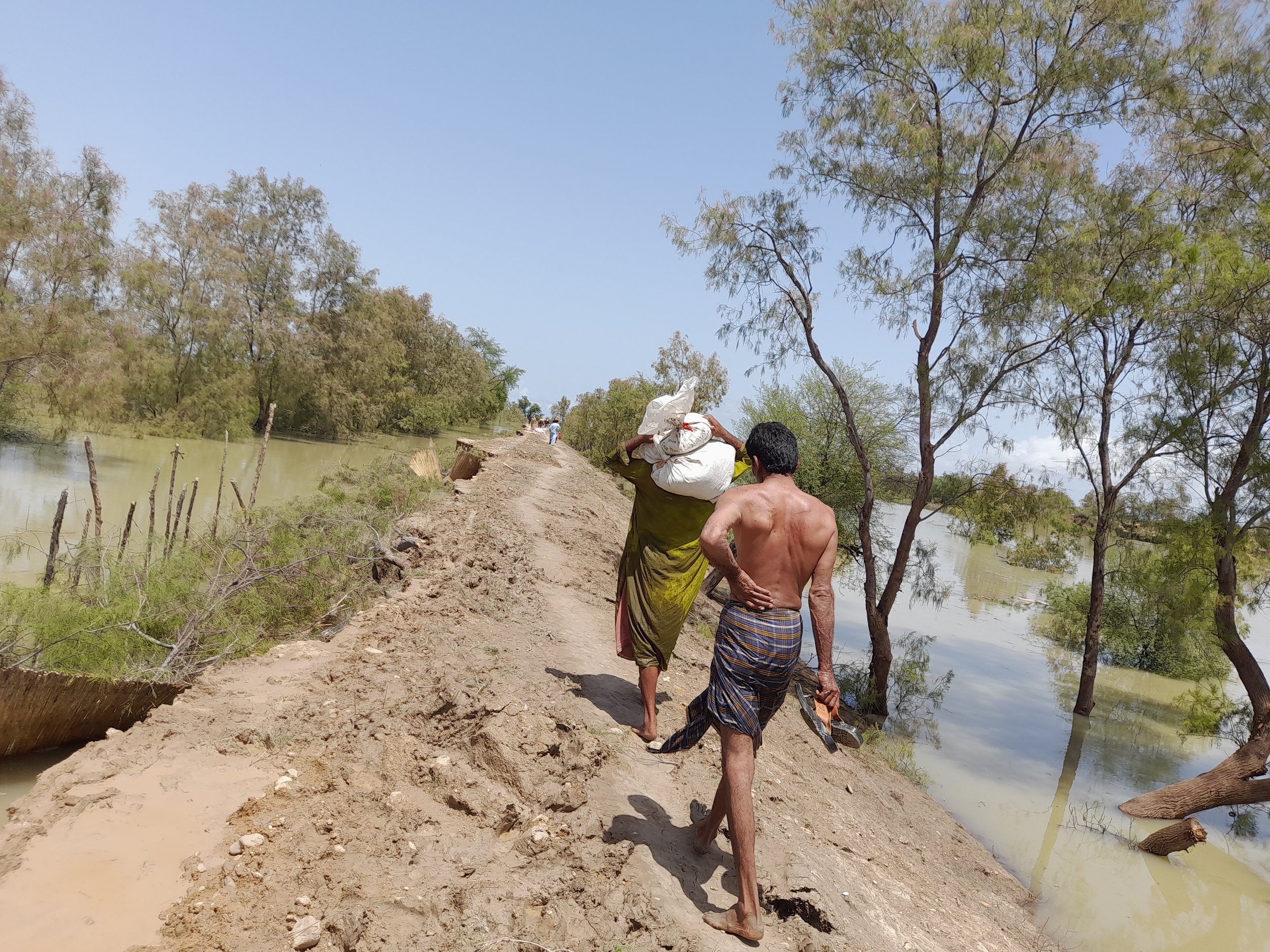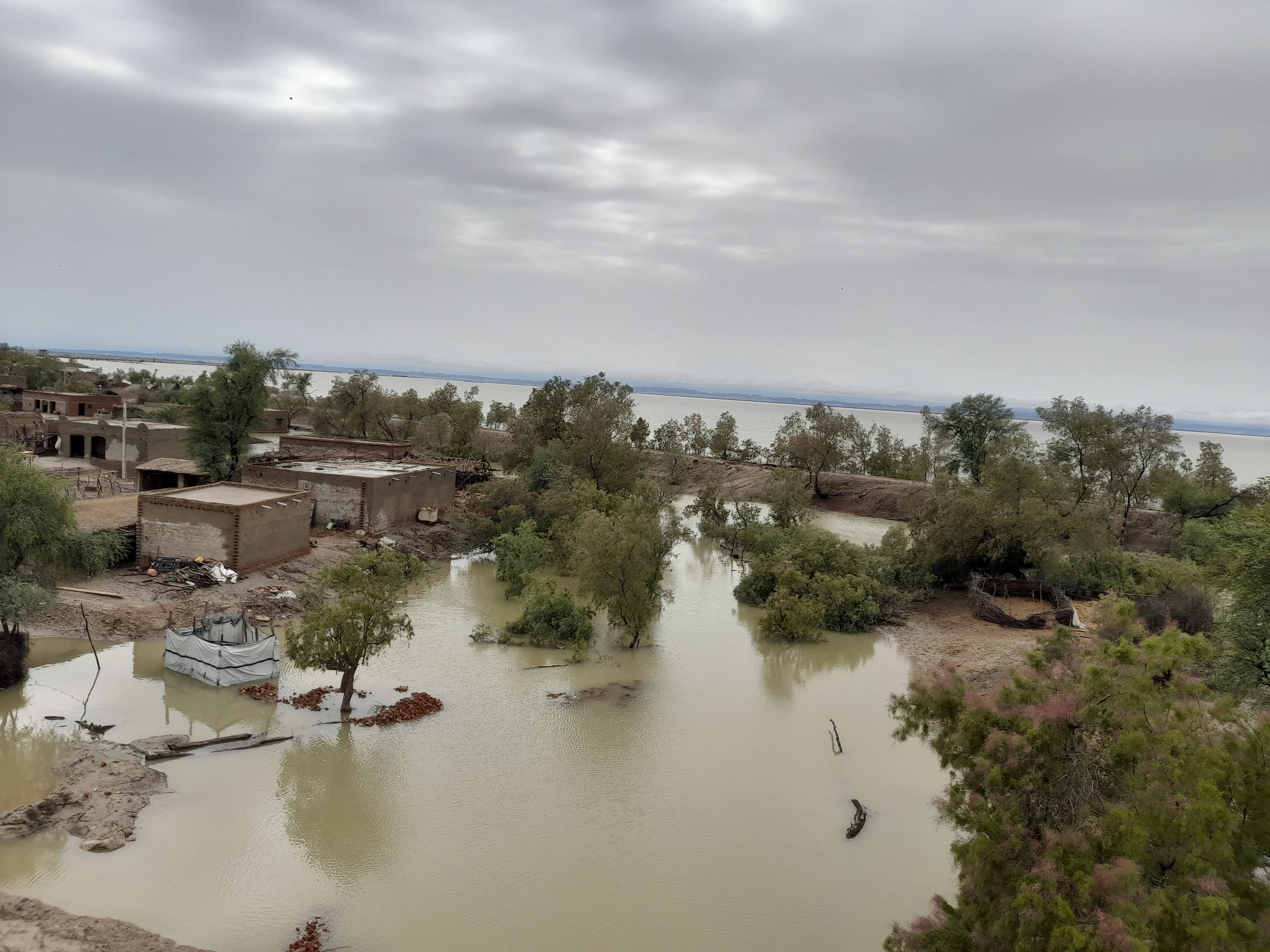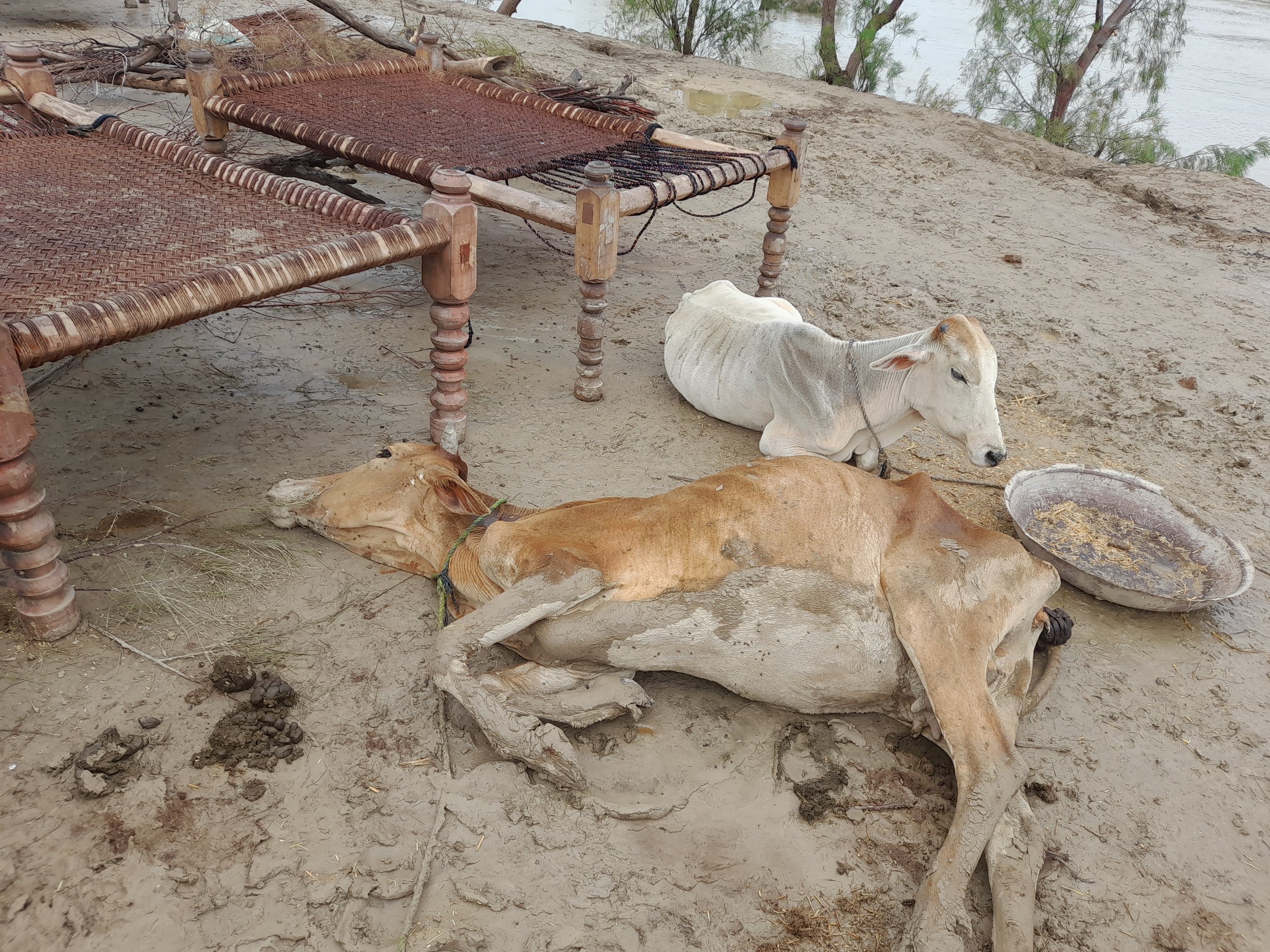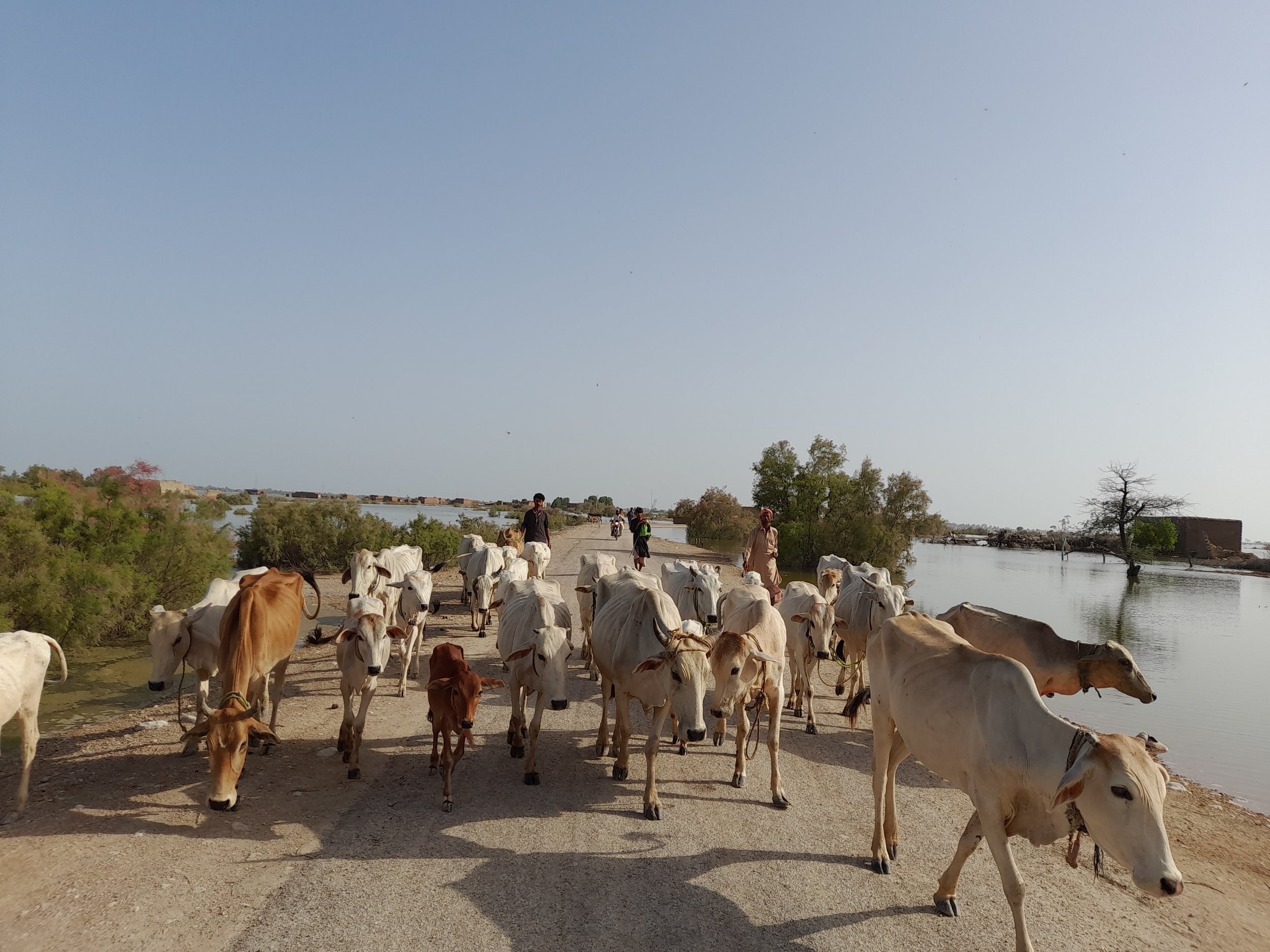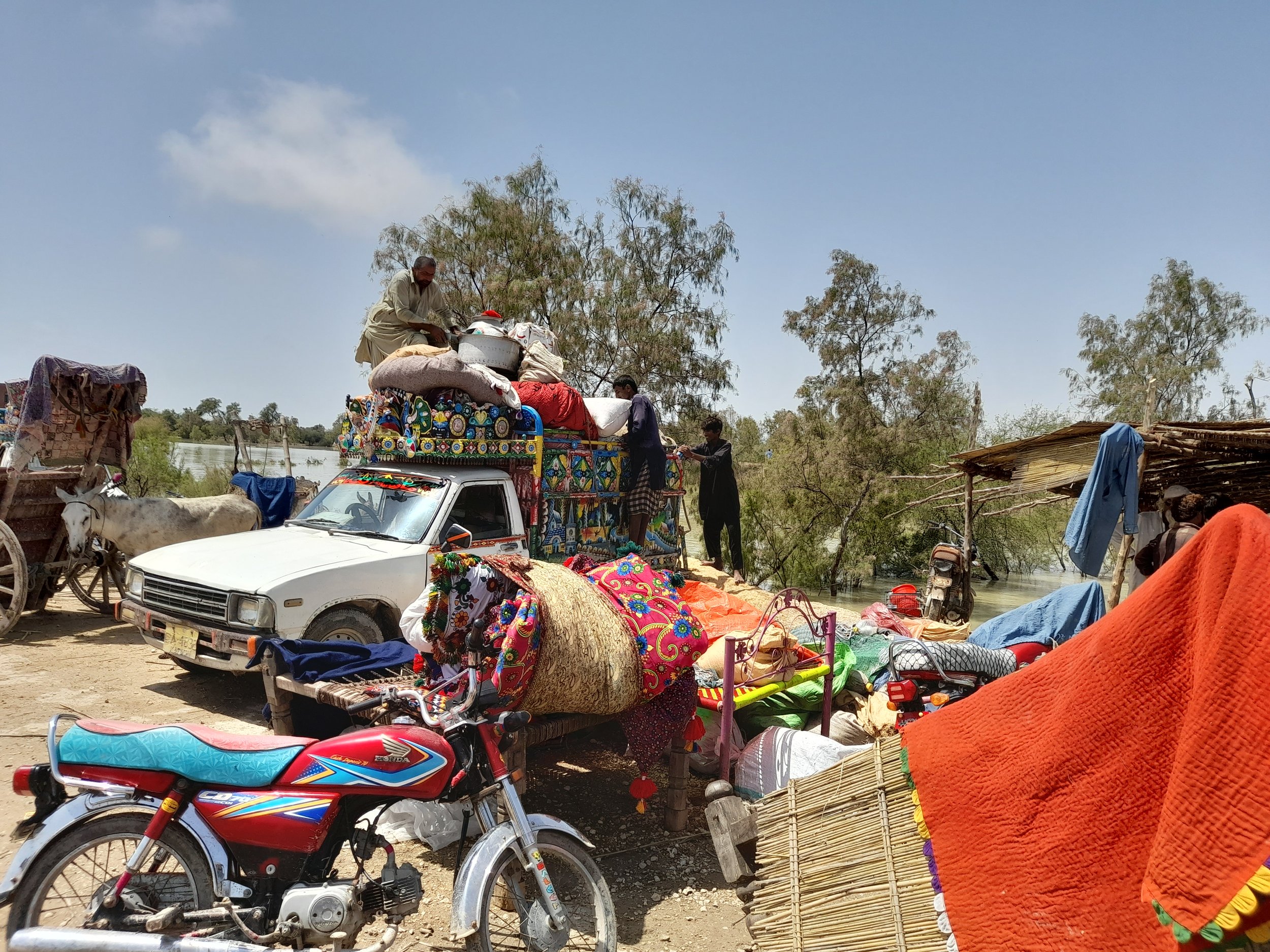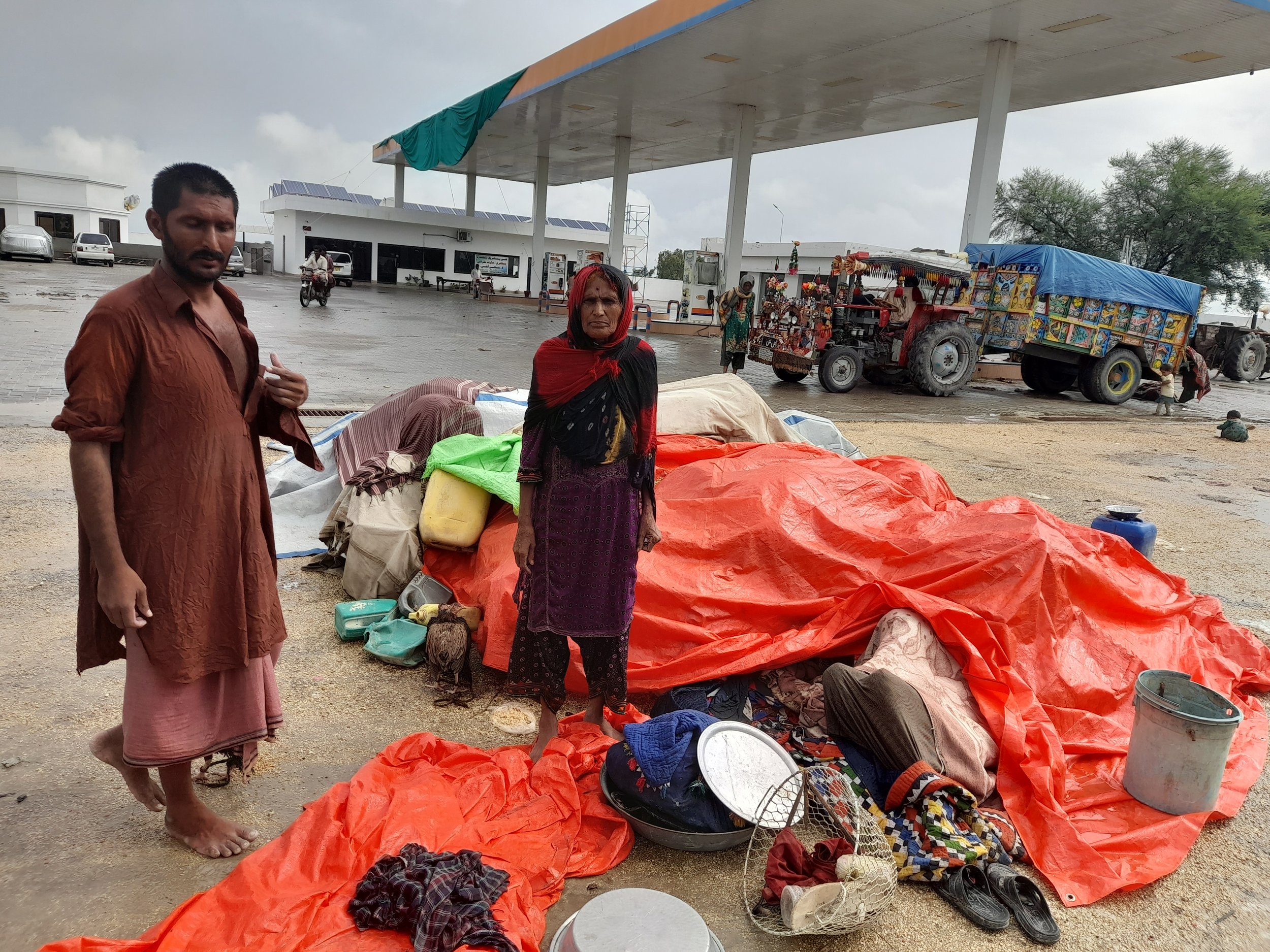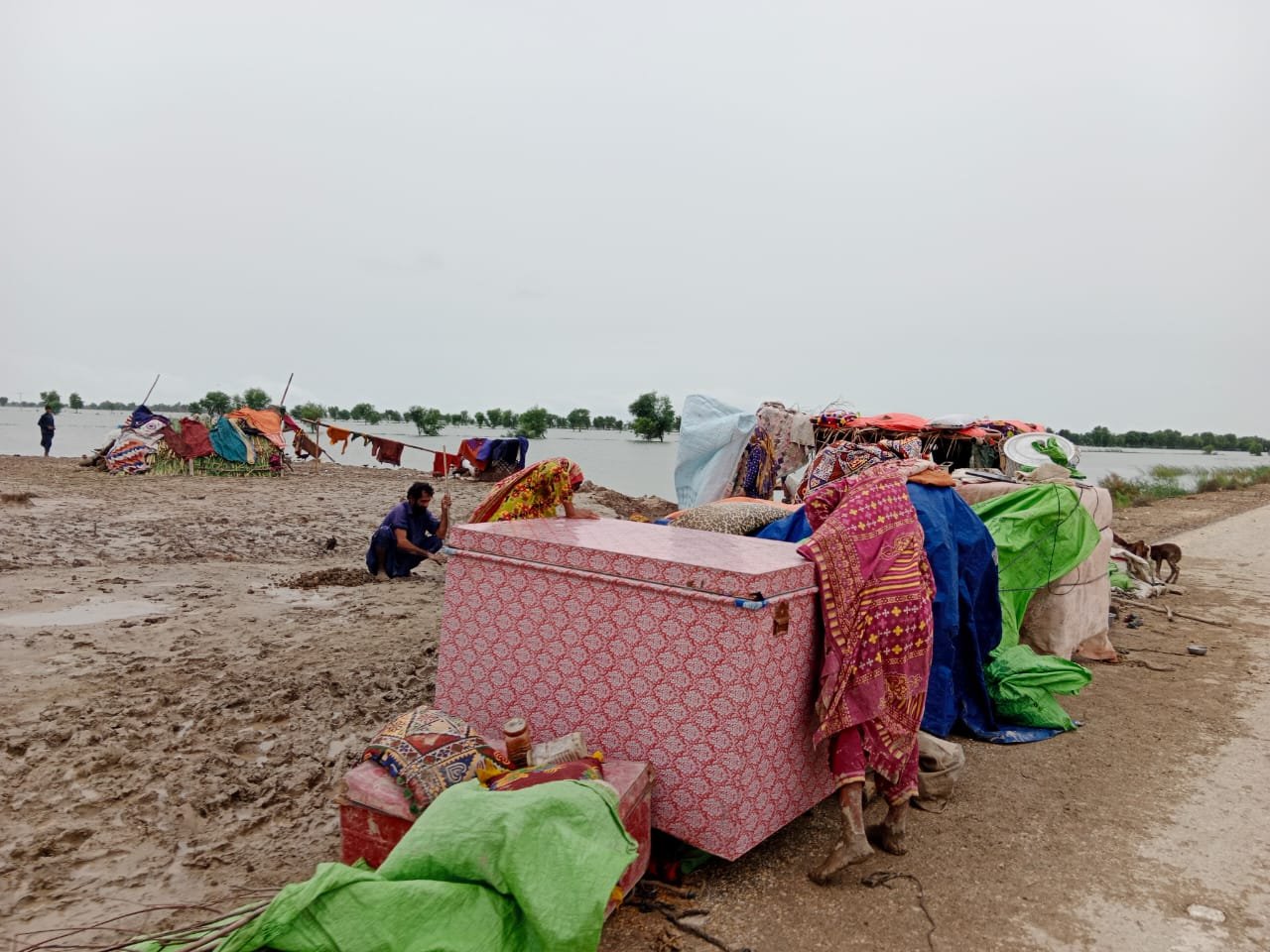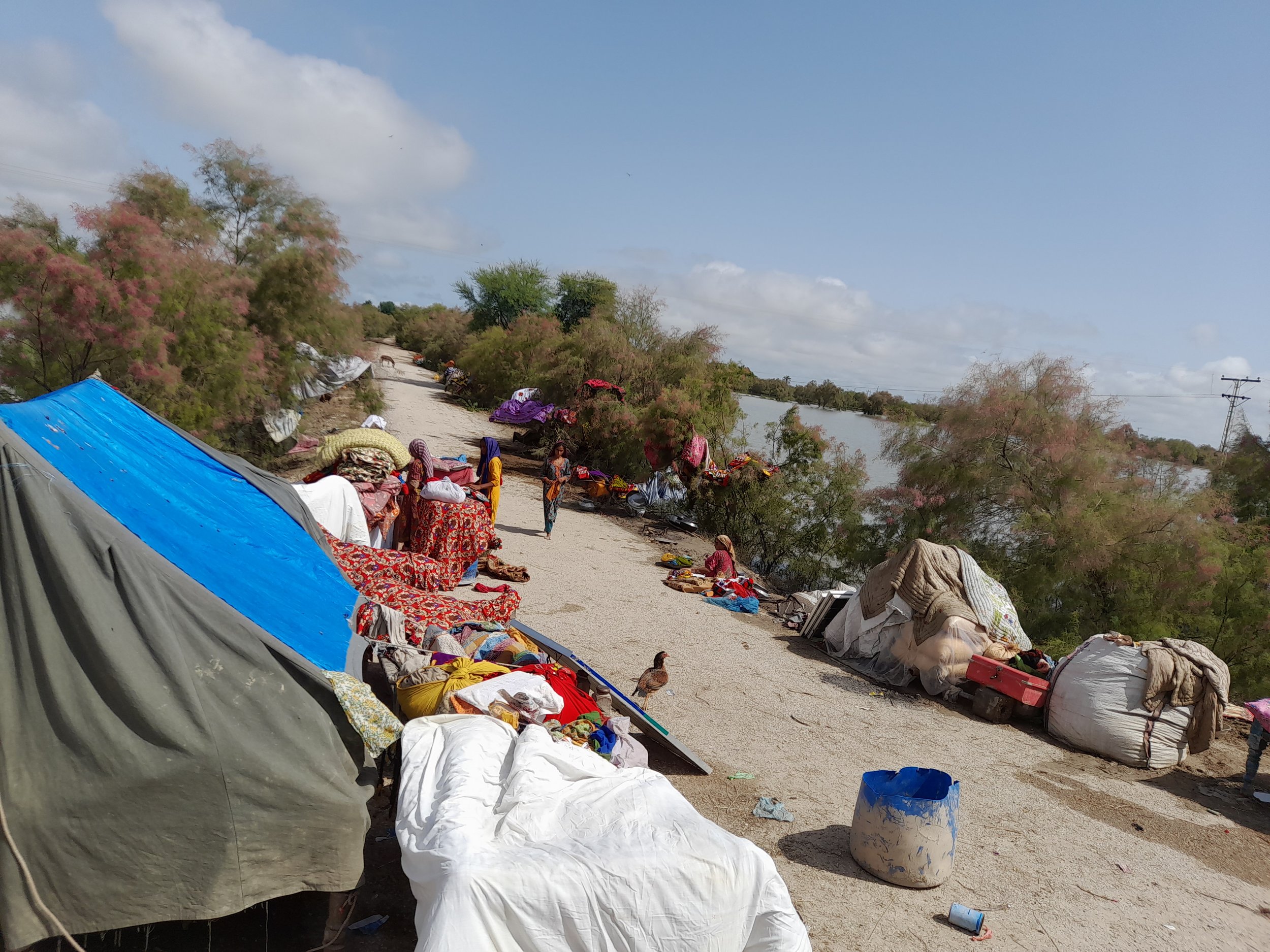Unending Disaster: Sindh’s Hamal Lake Submerges Surrounding Villages
Dispatches on the ongoing crisis from the flooding of Sindh’s second-largest lake.
On the evening of August 24th, I received a call from my family in Village Sabu Buriro in Sindh. The flood-protection ‘bund’ (dyke) on nearby Hamal Lake was in danger of being breached. The people of the village were in a state of panic and extreme fear. Most had left their homes to take refuge on small patches of elevated ground and a newly built government school. I immediately left for the village to help my family and relatives evacuate. Early next morning, many women, children and elders were relocated to the closest city, where they had to settle under open skies. Hundreds still remained back in the village; the situation was grim.
Our village is among the largest in Qambar Shahdadkot District. Located on the edge of Hamal Lake, Sindh’s second largest lake, it was known to be vulnerable to flooding as the government had done little to strengthen the flood dykes. Systemic corruption, years of neglect and underdevelopment across such “peripheral” regions of Pakistan have increased their vulnerability to natural and man-made disasters.
It had rained for three consecutive days. Together with the strong winds, this had significantly increased the risk of floods. As I rushed over to the village, I was constantly trying to call family members, but the phone service was down. There was no electricity; even solar energy was not available as incessant rain had rendered the solar panels unusable.
Once I reached Qambar district, I took a motorbike for the remaining journey to my village. Along the way, I witnessed the sheer devastation wrought by the rain and floods. Countless homes were destroyed, even cities were not safe. People were taking refuge on the roads, under the open sky.
The state authorities began releasing a torrent of numbers: 33 million people were displaced, over 1500 killed, more than 1.5 million houses destroyed, a million livestock killed, hundreds of thousands of acres of crop fields ruined. These are lives and livelihoods forever lost. And yet, the full picture of the devastation will only emerge once the water level recedes months from now. Hamal Lake still looks dangerously full, almost double its capacity.
Just a year ago, many villagers migrated from this region, especially those who relied heavily on livestock. The lake and surrounding grasslands had historically been central to their livelihoods – for fishing, grazing their livestock and other needs. But the past few years have been highly damaging for the lake. Insufficient rainfall along with the diversion of water to local powerful persons had parched Hamal Lake.
Then in June this year, the lake expanded by more than 10 kilometers, looking menacing in the barren landscape. Come July, unprecedented rainfall turned the lake into a river. Water came flowing down from the Kirthar mountain range and other parts of Balochistan. Extreme dry spells followed by record rainfall culminated in a brutal climate catastrophe. The devastation caused by the climate crisis was amplified by state negligence and incompetence.
Crops and livestock are the major sources of livelihood in the villages surrounding Hamal Lake. Almost all villagers are farmers and herders, owning cattle, sheep and goats. When a person owns more than half a dozen cattle or other livestock, he is called “Bhaagyo”, meaning one with fortune. Livestock is a source of wealth and social privilege, granting owners access to unlimited supplies of milk and dairy products, meat on special occasions, and a cash guarantee in times of crisis. But the rains and floods have killed and washed away animals in large numbers, destroying grasslands which were common grazing grounds, and causing outbreaks of skin diseases in the cattle that survived. The villagers who managed to save their livestock are still concerned about feeding them in the cities, living in impoverished conditions themselves.
The floods triggered migration on a mass scale. Thousands of people were evacuated eastwards towards Larkana, as the road to the west was blocked by high floodwaters. On every road in cities across Sindh, people have taken shelter under open skies or in the few government-provided tents. Children are falling sick while women struggle for privacy. Toilet facilities are limited for the hundreds of people sharing every camp. This is a disaster incomprehensible in scale and magnitude.
The pain and anguish of being displaced is difficult to express. Evacuees are trying to bring some essential possessions with them, their fans, charpoys, bedsheets, some stored grain, and their livestock. Many carry memories of the indifference of the authorities during previous flooding crises of 2007 and 2010.
This is a story not just of a few villages, but all of northwestern Sindh from the banks of the Indus. People have been dispossessed, displaced, rendered destitute on a mass scale. The unfolding crises of homelessness, disease, and food insecurity will further exacerbate an already disastrous situation. Waterlogged and congested living conditions are enabling the spread of malaria, gastrointestinal and skin diseases. Doctors are few, their patients in hundreds.
With the help of the feminist organization Women Democratic Front and the left-wing Awami Workers Party, we have organized medical camps, and distributed food rations. As a precautionary move, we also vaccinated the livestock to help prevent the spread of animal disease. Our comrades are continuing to organize medical and basic aid provision for the flood victims. These efforts are helpful but unfortunately insufficient given the sheer scale of the crisis. Without extensive government and international support, the lives of the flood-displaced are in grave danger.
Ibrahim Buriro is pursuing a Masters in Development Studies at Institute of Business Administration, Karachi. He is an organiser with Awami Workers Party.
Consider supporting AWP and WDF’s flood relief work. Click here

